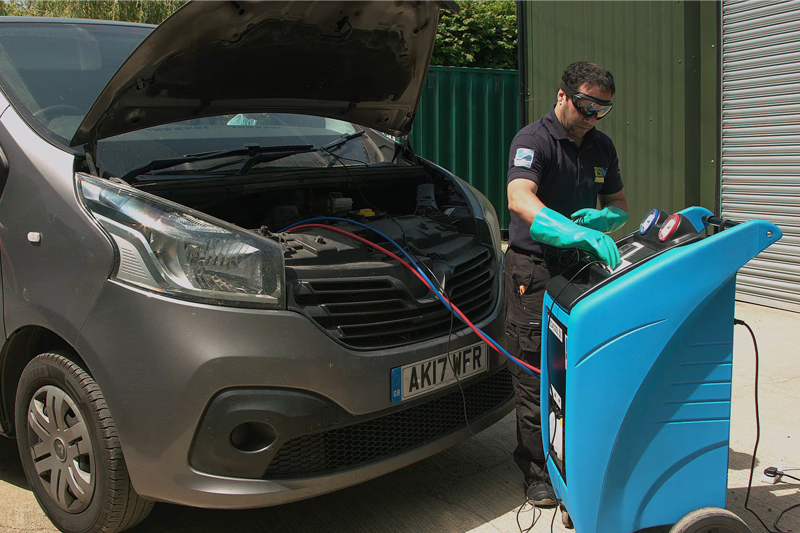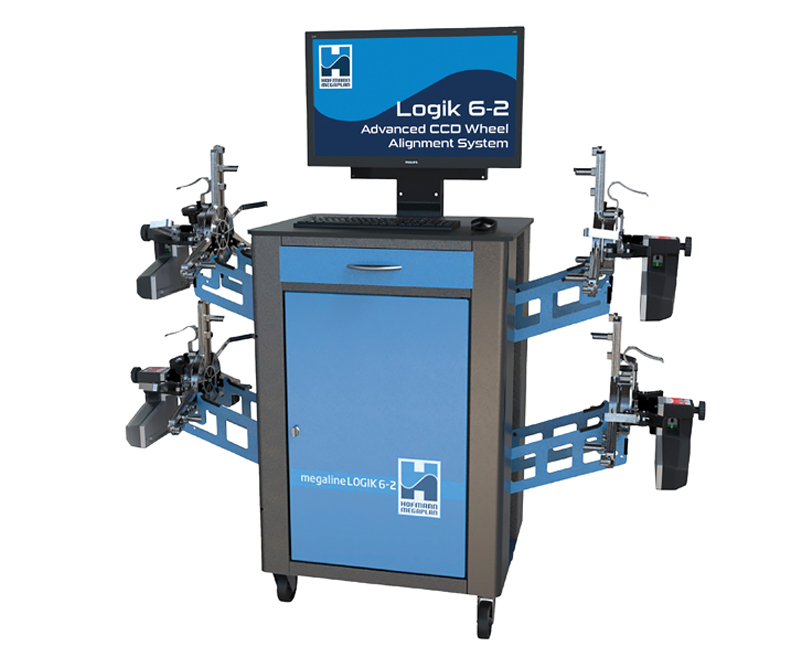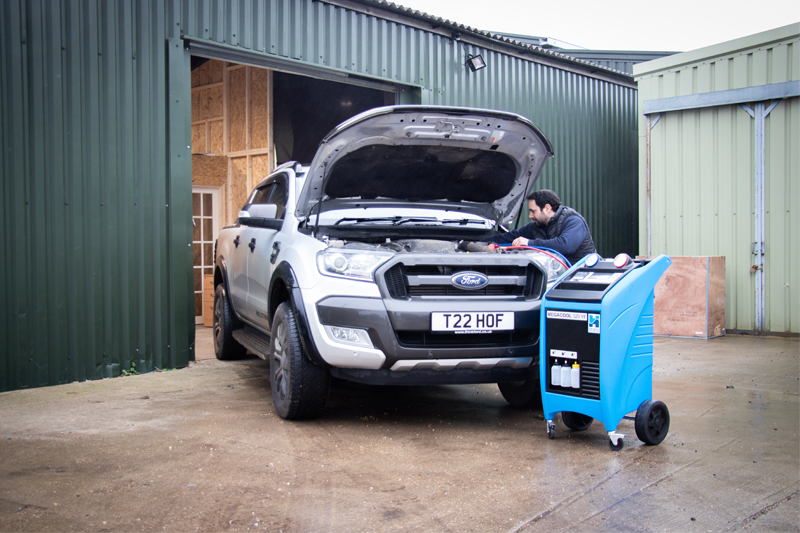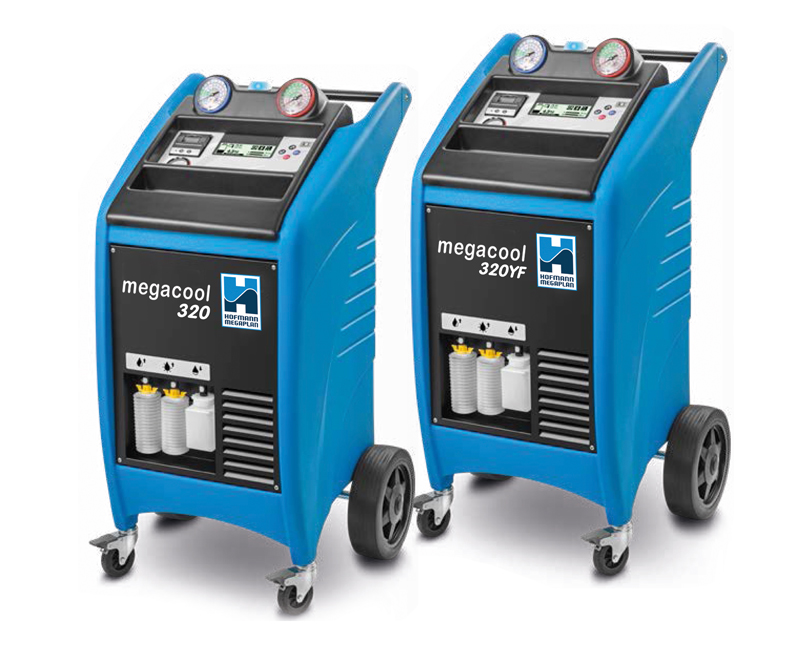
Hofmann Megaplan gives readers of PMM its top tips for air conditioning servicing.
Most people associate air conditioning with the summer and focus on its ability to reduce the interior temperature of a car on sweltering days, but that’s not the only benefit of a properly maintained A/C system.
Cool air is not the only thing generated by A/C, it also produces relatively dry air, with most of the moisture removed; exactly what drivers need during the colder months as it demists the insides of the windows incredibly quickly – dry air absorbs the moisture straight off the inside of the glass.
Over time, the refrigerant in the A/C system can seep out of the seals and moisture can build up inside the system too. Running the system on low levels of refrigerant doesn’t only mean you won’t get the designed temperature drop in the vehicle. More importantly, for car or van owners, the A/C pump will be continually running, trying to generate the necessary pressure, which will then put extra strain on the components leading to premature replacement. It could also increase fuel consumption.

Moisture build-up inside the air con system can corrode the internals, degrade the performance and lead to failures; an A/C system needs maintaining just like any other part of a vehicle.
There are two main types of refrigerant used in vehicles today, R134a and the newer R1234yf. R134a is extremely harmful to the environment and has a significant impact on Global warming, hence the change to R1234yf. The newer gas began appearing around 2013 but uptake was sporadic so the older gas is still in a lot of vehicles today. An A/C service entails connecting the ‘recharge’ equipment to the vehicle to recover the existing refrigerant into the equipment’s internal tank. On its way to the tank, it is thoroughly cleaned using complex filters and separators to ensure all the impurities and moisture is taken out. Any oil recovered is disposed of into the A/C machine’s catch tank.
Once the system is empty, the equipment generates a vacuum inside the refrigerant circuit, holding it in this this vacuum state for around 20 minutes, so that any moisture in the system evaporates (boiling point reduced due to pressure change) and is drawn out of the system and expelled through the A/C machine.
After that, the equipment carries out a leak test by closing the system and watching for any pressure drops. If any oil was recovered, it is replaced with new oil and vehicle’s A/C circuit is filled with fresh refrigerant (most of what goes back into the vehicle is the original refrigerant, just thoroughly cleaned).
Top tips:
- It’s always worth checking the drive belt for the A/C pump, just in case it needs replacing.
- Looking after your refrigerant is key to cost control. When you fill the equipment with new refrigerant, make sure you note how much has gone in (and when) and ensure the virgin gas is returned to a secure area.
- A/C refrigerant is expensive. Remember to keep an eye on the amount of refrigerant being used to highlight any issues with working practices that may be costing you refrigerant.
- Don’t attempt to fill a system that has a leak, not only is it illegal to knowingly release refrigerant into the atmosphere, it’s also expensive. If you see the refrigerant leaking out, you will have lost a considerable amount before you manage to recover what’s left in the system.

Megacool 320 Aircon Recharge Unit
Manufactured in Italy, the megacool 320, from Hofmann Megaplan is a fully automatic vehicle air-conditioning recovery system, suitable for light and heavy commercial vehicles, and available in R134a and R1234yf gas. It’s a perfect option for the garage owner who recognises the value in having a totally automatic machine, requiring minimal manual input from technicians, whose time can be used elsewhere in the workshop. The features include: Automatic oil; dye injection; an integral printer and Bluetooth connectivity, for use with a remote tablet or PC.

Advanced features include easy operation via a user-friendly control panel with a largeicon graphic display; and automatic ‘minimal intervention’ working cycle – the machine has no manual taps which require a technician to operate them; high precision oil and dye injection thanks to a load cell based weighing mechanism; a ‘full recovery function’, which performs multiple checks and additional recovery cycles to ensure maximum gas recovery from the A/C system; a flushing system, which purges the machine of oil, so it can be used on hybrid or electric vehicles, or vice-versa; accurate air-purge thanks to dual pressure gauges, which enable accurate release of non-condensable gasses for optimum efficiency; Aircon Diagnostic/Pressure test – dual temperature sensors facilitate a fast and accurate diagnostic performance test of the A/C system.









